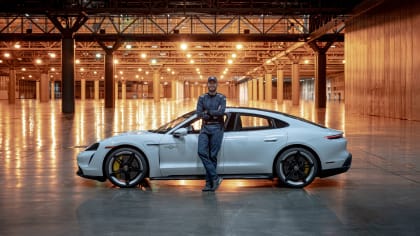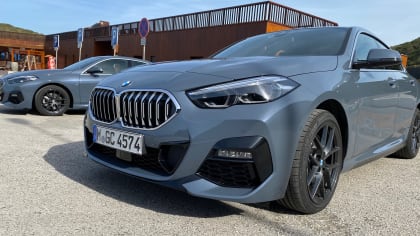2025 Audi Q7 Prestige Quattro

This Dated German Three-Row SUV Still Brings a Lot of Value
The 2025 Audi Q7 may be aging, but its timeless design, luxurious interior, and sporty driving dynamics keep it relevant. While the infotainment system feels outdated, the Q7 still offers strong performance, premium features, and solid value in the luxury SUV segment. Read our full review for an in-depth look at its strengths and weaknesses.
By Joe Santos
Mon, Feb 10, 2025 01:35 AM PST
Images by the author.
The Audi Q7 has not been refreshed since 2020 and its last complete redesign was in 2017, which is an eon in automotive years. But despite its age, the Q7 has a timeless design and sporty driving dynamics that never get old. It could really use a new infotainment system, though.
But I won’t focus too much on the Q7’s age, considering it should be redesigned soon. For now, the Audi Q7 provides luxury buyers with a surprisingly good value, considering the segment it resides in.
Interior
The Audi Q7 lives up to its luxury designation with its plush interior that features a minimalist and contemporary design. The seats are covered in Valcona leather and the trim pieces are all piano black or metallic, giving the cabin a rich and upscale feel. The infotainment controls are well-placed and are within easy reach from the driver and passenger. Even the entry-level trim interior come well-equipped, but my top-trim Prestige tester was fully loaded.

Some interior highlights included heated and ventilated seats, a heated steering wheel, and front seat massagers. The rear outboard seats are heated as well, and no, the second row does not have captain’s chairs, which makes it look old school compared to its competitors. However, that means it has room for seven passengers, as opposed to six like some competitors.

Otherwise, there is plenty of space in the first two rows, but the rear middle-seat occupant, as well as the third spaces, should be reserved for children as opposed to adults. There is plenty of cargo space as well, especially with the third row folded. But the cargo room is decent when the seat back is folded up, which is easy to make happen with the push of a button.
Powertrain
The Audi Q7 is powered by a standard turbocharged 2.0-liter, four-cylinder engine that’s mated to a 12-volt hybrid system. With 261 horsepower, this system is adequate for daily commuting. But if you want more power, the turbocharged 3.0-liter V6 is the right choice. This engine is combined with a 48-volt hybrid system for a total power output of 335 horsepower and 369 lb-ft of torque, which is more than enough for a daily commute.
In operation, the turbocharged engine feels very smooth and provides plenty of mid-range torque, which makes getting the 5,135-pound SUV up to speed quickly a breeze. Audi’s estimated 0-60-mph time of 5.5 seconds is not joke. Additionally, the Q7’s eight-speed automatic transmission shifts quickly and although the shifter feels a little weird to use for the first time, it’s intuitive and easy to get used to.

But driving the Q7 isn’t about straight-line speed as it handles well give its size. The SUV’s steering effort is light and direct and its adjustable suspension makes it easy to pilot around tight corners at speed. There were times I forgot that I was driving a three-row SUV. Also, it handled very well in the snow, considering it’s anchored by 21-inch wheels with all-season tires. I would imagine that installing a set of winter tires would make this thing unstoppable in a snowy down pour.
Technology
Now, for the Audi Q7’s downsides. I won’t say that its audio system is completely archaic, because it’s not. There are dual screens on the center console. The top 10.1-inchone allows control of the MMI system and the bottom 8.6-incher is for the HVAC controls. There is also an Audi Virtual Cockpit display that sits in front of the driver.
The displays are aesthetically pleasing and don’t make the car look dated, but their operation does. When Audi revamped the Q7’s infotainment system in 2020, it prided itself on the haptic touch controls, in which the icons or “buttons” on the display screen vibrate when you press them. They even give a little click feeling when you press down on them. But there is a delay when you touch each icon, akin to the touchscreen functions on older phones and electronics. That said, this technology was cool back in 2020, but five years later, it feels a little dated and annoying to use.

Otherwise, the Bang and Olufsen 3D sound system never fails as it sounds amazing with any song playing through car’s 23 speakers. The Virtual Cockpit still looks nice, but again, is getting a little long in the tooth since it was first rolled out in 2017. Sure, it’s great to see a large version of the onboard navigation map right in front of you, but it’s kind of useless if you only use the wireless Apple CarPlay and Android Auto functions for entertainment and navigation like I do.
Exterior
It would be easy to harp on the Audi Q7’s exterior looks considering it’s in need of a redesign, but there’s no sense in punching below the belt. Instead, I will say that the Q7 is still a very handsome SUV that gives off a masculine vibe with its boxy look, while remaining soft around the edges and subtle compared to rivals like the BMW X7 and Mercedes-Benz GLS.

My tester for the week was also equipped with the Black Optic package, which adds matte-gray 21-inch wheels, anthracite emblems, and black exterior trim to the mix. The whole look, combined with the car’s Samurai Gray paint job, looks intimidating, but very sleek.
Safety
The Audi Q7 is very safe, given its sheer size and weight. But if a lot of metal isn’t enough to give you peace of mind, its safety equipment sure will. The Q7 has a multitude of airbags around the cabin, as well as a series of safety systems in the form of Audi Pre-Sense and Pre-Sense front.
The former uses the car’s camera and sensors to detect any possible collisions. If it does detect one, the system automatically rolls up the windows and pre-tensions the seatbelts to brace for an impact. The latter utilizes the car’s forward-collision warning and automatic emergency braking to mitigate any possible front collisions.

Additionally, the Q7 has a surround-view camera system, a park-assist system, and a rear cross-traffic alert to make parking the large SUV easy in nearly every situation.
Summary
The 2025 Audi Q7 starts at around $60,000 for the base-level Premium model, while stepping up the top-trim Prestige increases the bottom line to around $78,000. With all the additional packages, but tester for the week rang in at $83,890 with the destination charge added. That’s a hefty sum for such a dated SUV, but it’s on par with other German competitors.

Also, I consider the price worth it considering the type of luxury amenities you get with the car (like the massaging seats and other technology). Also, if you can negotiate that price down at a dealership, it would make the Audi Q7 a bargain.
About The Author

Joe Santos is an automotive journalist with over 10 years of professional writing and editing experience. His article topics range from full-length car reviews to car-buying advice. He even spent four years selling cars at a few different dealerships, so he may know a thing or two if you’re in the market for a new or used car.




